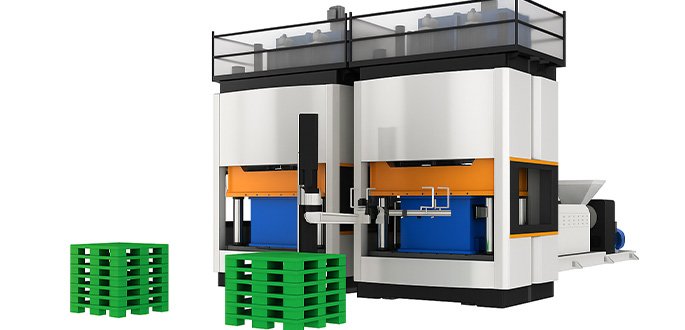According to the latest report by the IMARC Group research institute, titled “Pallet Market Report 2025–2033,” the global pallet market is projected to reach a value of $68.5 billion by 2025. The report in addition anticipates that, with an average annual growth rate of 4%, the market will extend to almost $94 billion through 2033. This consistent increase is pushed by way of the speedy expansion of e-commerce, the increasing automation of warehouses, and a developing shift across industries towards the use of sustainable and recyclable substances. The analytical file examines diverse aspects of the market—such as length, growth, trends, regional shares, and current improvements— providing a detailed outlook at the future of this international enterprise.
In recent years, pallets have developed from being easy equipment for transferring items into a vital aspect of the sector’s logistics infrastructure. With the rise of on-line sales and the growing want for large warehouses and order fulfillment facilities, demand for standardized and efficient pallets has surged dramatically. Today, almost every level of the supply chain—from receiving items to storage and distribution—is designed round pallet-primarily based structures. The fast tempo of order deliveries, which include same-day or even hourly transport models, has made long lasting, lightweight, and reliable pallets more critical than ever.
At the same time, technological advances have transformed the face of modern warehouses. The use of robots, conveyors, and automatic storage systems has heightened the need for pallets with specific dimensions and uniform textures—due to the fact that even the slightest deviation in length or structure can disrupt the operation of autmatic equipment. Some agencies have long gone a step further, adopting smart pallets prepared with IoT sensors to track the location and condition of goods in actual time. This virtual transformation has led to more accuracy, fewer errors, and significant savings in both time and operational costs.
Alongside technological progress, environmental sustainability has become one of the most important pillars of growth in the pallet industry. Companies are increasingly aware of their environmental footprint and are actively seeking alternatives to standard wooden pallets. Reusable and recyclable plastic pallets are gaining popularity at a tremendous tempo. A standout instance of this shift is the collaboration between Barilla and CHEP in Italy, which has reduced carbon emissions by means of greater than 3,700 tons yearly via the great use of returnable pallets. CHEP’s parent business enterprise, Brambles Limited, is identified as one of the global’s most sustainable agencies. Its enterprise version is constructed on a share-and-reuse cycle for pallets—a machine that no longer best minimizes waste however additionally plays a critical function in advancing the circular economy inside the logistics quarter.

Despite these advances, the pallet industry continues to face significant challenges. On the only hand, manufacturers have to find a balance among reducing manufacturing charges and growing sturdiness and environmental sustainability. On the other hand, the complicated requirements of international alternate require strict adherence to strict standards. Adhering to these regulations not only prevents shipments from being rejected at border controls, but also ensures the smooth and unrestricted flow of goods across worldwide markets.
Geographically, North America continues to lead the global pallet market, and has a significant share in both production and consumption. With its strong manufacturing infrastructure and strict trading standards, the region has created an ideal environment for innovation in logistics and packaging. At the same time, emerging markets in Asia – especially China and India – are rapidly becoming key players in the industry. The expansion of e-commerce and the construction of modern warehouse facilities across these countries is driving significant growth and reshaping the global pallet landscape.

Although wooden pallets still have a considerable proportion of the international market, the use of plastic pallets is constantly growing due to their durability, reusability and environmental compatibility. Their adoption has grown specifically rapidly in industries including pharmaceuticals, chemical compounds and meals manufacturing, in which strict hygiene requirements, moisture resistance and the capability to resist repeated washing are important. These regulatory and operational requirements have made plastic pallets an increasingly appealing desire for companies seeking both efficiency and compliance.

Overall, the pallet industry stands on the brink of a major transformation—one driven by using a combination of era, sustainability, and performance which will shape the future of global logistics. The market’s destiny belongs to groups capable of putting the right stability between innovation, standardization, and environmental duty, at the same time as continually redefining their growth strategies in reaction to the transferring dynamics of worldwide trade and generation.


